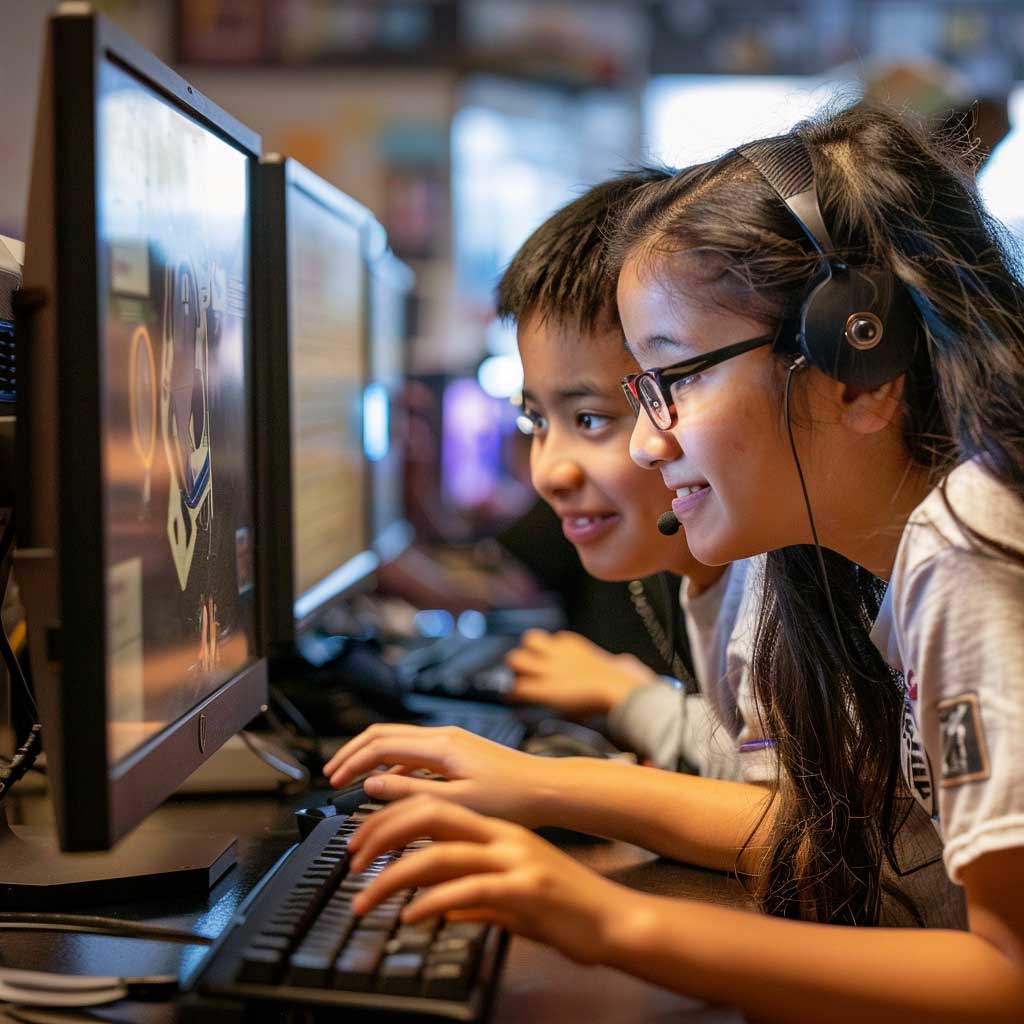Interactive Games: A Strategy for the Classroom
Learning Strategy: Interactive Games
In education, engaging students and sparking enthusiasm for learning are key for their success. A popular strategy in both traditional classrooms and homeschools is using this teaching strategy in the curriculum. These games make learning enjoyable and help develop critical thinking, problem-solving, and language skills. In any learning environment, interactive games offer a lively way for students to take part and learn.
Engaging Students Through Problem-Solving
Interactive games are excellent for enhancing students’ problem-solving skills. Games like “Escape Room Math” or “Mystery Science Quests” challenge students to use their knowledge to solve puzzles and progress through the game. These games not only reinforce academic concepts but also build resilience and perseverance as students face tougher challenges.
Interactive Games Foster Critical Thinking

Developing critical thinking is essential, and interactive games are perfect for this. Games that require thoughtful analysis, strategic decision making, and evaluating options naturally encourage critical thinking. In schools, games like “Debate Duel” help students develop arguments and logical reasoning, deepening their understanding of complex topics. Homeschoolers might enjoy games like “Chess Math” or “Logic Puzzlers,” which combine fun with critical thinking exercises.
Enhancing Language Skills
Effective language learning happens in fun, immersive environments. Interactive games are great for boosting language skills through active participation. Games such as “Word Olympics” or “Vocabulary Relay” bring a competitive edge to learning, pushing students to broaden their vocabulary and communication skills. Homeschoolers can use storytelling games or language puzzles as creative ways to explore language and express themselves more clearly.
Promoting Collaboration and Competition
Interactive games naturally encourage both teamwork and competition, which is important for social and emotional growth. In classrooms, cooperative games like “Team Trivia” or “Group Challenges” teach the value of working together, communication, and supporting each other. Meanwhile, competitive games like “Math Olympics” or “Spelling Bee Showdown” inspire a healthy competitive spirit, pushing students to excel and improve their skills.
Adapting to Classroom and Homeschool Settings
Interactive games are flexible and can be adapted to different educational settings. Teachers in busy classrooms can incorporate these games into lessons as engaging activities or assessments. Homeschoolers can use them to enrich their curriculum, customizing games to fit individual learning styles and preferences. With many online resources and game platforms available, educators and parents can access a variety of interactive learning tools to enhance their educational approaches.
Final Thoughts on the Teaching Strategy
Interactive games blend entertainment with education, making learning a delightful and engaging experience. Whether in a traditional classroom or a homeschool, these games are powerful tools for promoting problem-solving, critical thinking, language development, teamwork, and healthy competition. By incorporating interactive games into their teaching, educators and homeschooling parents can foster a lasting love for learning, setting students on a path to academic success and personal growth.
